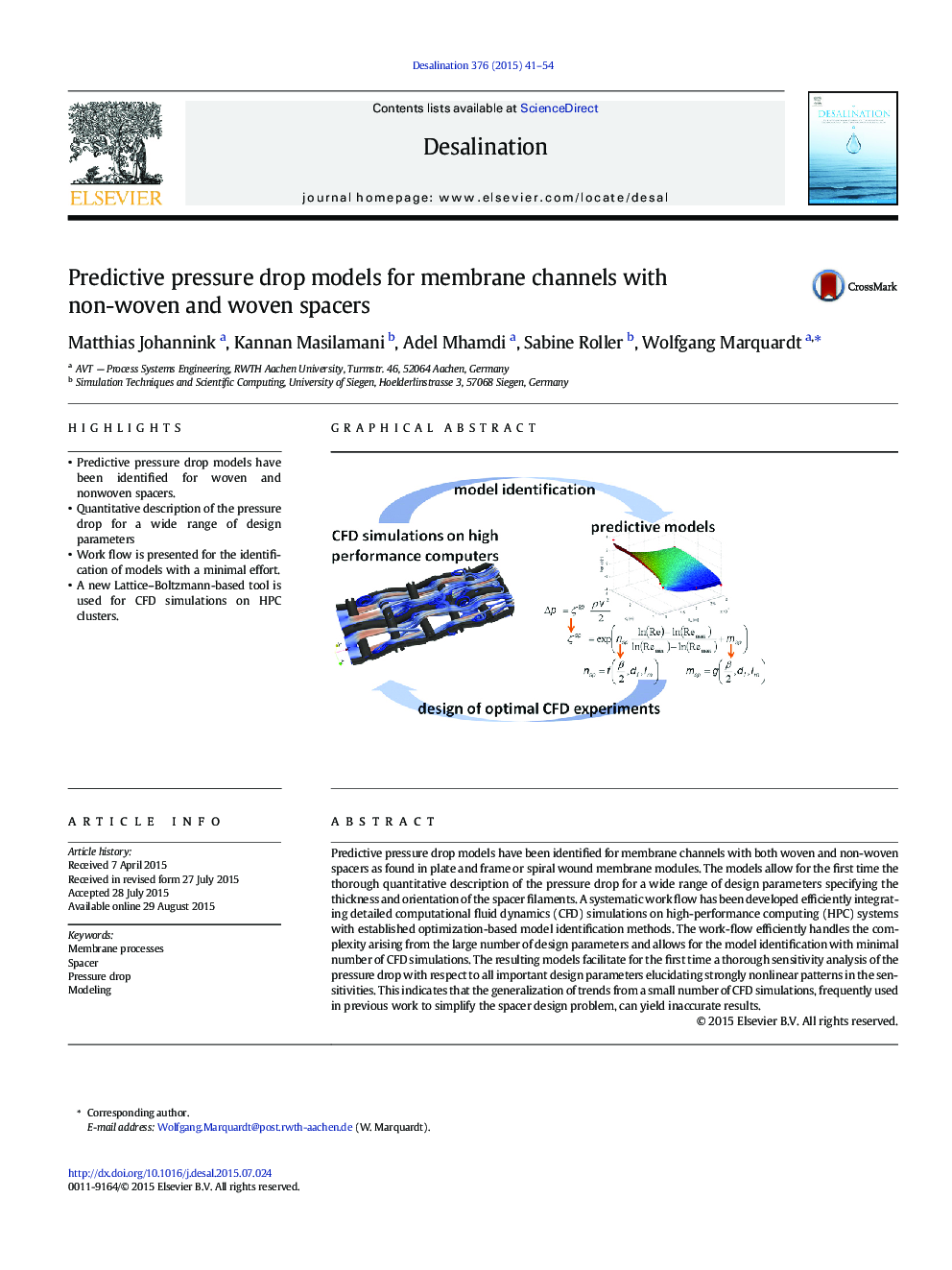| Article ID | Journal | Published Year | Pages | File Type |
|---|---|---|---|---|
| 623030 | Desalination | 2015 | 14 Pages |
•Predictive pressure drop models have been identified for woven and nonwoven spacers.•Quantitative description of the pressure drop for a wide range of design parameters•Work flow is presented for the identification of models with a minimal effort.•A new Lattice–Boltzmann-based tool is used for CFD simulations on HPC clusters.
Predictive pressure drop models have been identified for membrane channels with both woven and non-woven spacers as found in plate and frame or spiral wound membrane modules. The models allow for the first time the thorough quantitative description of the pressure drop for a wide range of design parameters specifying the thickness and orientation of the spacer filaments. A systematic work flow has been developed efficiently integrating detailed computational fluid dynamics (CFD) simulations on high-performance computing (HPC) systems with established optimization-based model identification methods. The work-flow efficiently handles the complexity arising from the large number of design parameters and allows for the model identification with minimal number of CFD simulations. The resulting models facilitate for the first time a thorough sensitivity analysis of the pressure drop with respect to all important design parameters elucidating strongly nonlinear patterns in the sensitivities. This indicates that the generalization of trends from a small number of CFD simulations, frequently used in previous work to simplify the spacer design problem, can yield inaccurate results.
Graphical abstractFigure optionsDownload full-size imageDownload as PowerPoint slide
